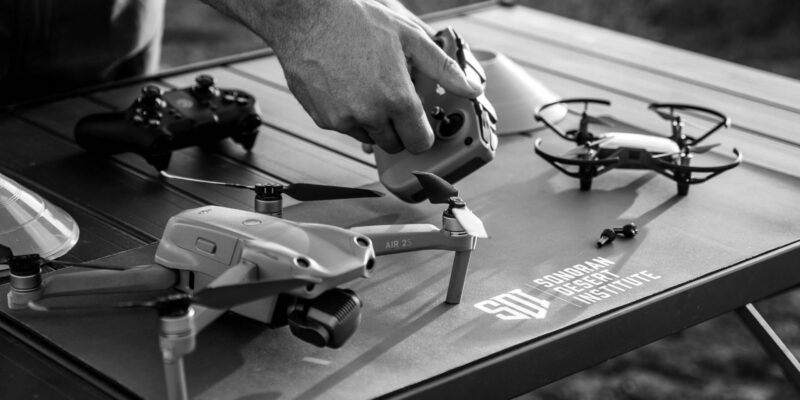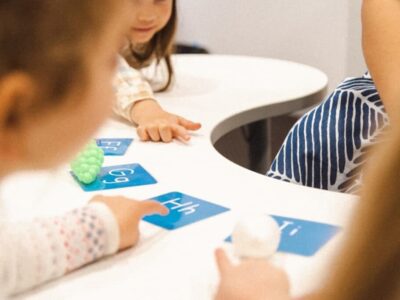Technical training often recalls large workshops filled with benches, machines and specialized equipment. For students living in apartments or homes, without a dedicated garage or shop, this picture can feel out of reach. How can someone pursue hands-on training in a small space, while staying safe? Sonoran Desert Institute (SDI), accredited by the Distance Education Accrediting Commission (DEAC), is showing that safety and skill development can go hand in hand, even in compact living environments.
Providing students with tools designed for safety and adaptability ensures that learners can complete their assignments confidently, no matter the size of their workspace. Safety-first tools make technical education accessible. They allow students to build real skills, without compromising their environment or well-being, proving that meaningful training can happen far beyond traditional classrooms and labs.
Myth 1 – You Need a Full Workshop to Train Safely
A common misconception is that technical training requires a dedicated shop space with industrial equipment. Safety-focused tools are designed to function effectively in smaller, more controlled environments. Programs emphasize this approach by integrating equipment that balances realism with safety. It ensures students can build hands-on proficiency, without the need for a fully outfitted workshop.
Students receive curated toolkits tailored to coursework. These kits include instruments and components that can be used safely on a table or desk, eliminating the need for heavy machinery. Parts are selected with both learning outcomes and student safety in mind, ensuring that skills can be developed responsibly, without specialized facilities. Rather than being a limitation, a small-space setting emphasizes precision, organization and safe practice, qualities essential for professional success.
Myth 2 – Apartment Training Poses Too Many Risks
Some worry that working in an apartment could create hazards, from noise to potential safety issues. Yet safety-first tools are specifically designed to minimize these risks. Compact, low-noise equipment helps students practice, without disturbing neighbors or creating unsafe conditions.
For example, non-powered tools and controlled practice parts allow learners to develop techniques, without introducing unnecessary risks. Its coursework pairs these tools with clear safety guidelines, encouraging students to establish safe work habits that can scale to professional environments later. By practicing responsibly in smaller settings, students build safety awareness that will serve them well when transitioning to larger workshops.
Myth 3 – Limited Space Means Limited Learning
It’s easy to assume that small-space training cannot provide the depth of education needed to master a trade. Yet many of the most important techniques in technical fields can be learned through careful practice with compact, safety-first tools.
Students work through structured projects that reinforce skills such as assembly, disassembly, measurement and troubleshooting. These exercises can be performed safely on a table or bench, requiring only modest space. The focus on fundamental techniques ensures students build a strong base before advancing to more complex tasks. The learning outcomes remain the same, such as competence, confidence and the ability to demonstrate skill.
Myth 4 – Safety Tools Are Less Rigorous
Another misconception is that safety-first tools are watered-down versions of professional equipment. They are chosen to replicate the function of trade tools, while ensuring student safety in an at-home setting. For instance, practice parts may be designed to mimic the weight and structure of real components, giving students an authentic experience, without unnecessary hazards. Measurement instruments and precision tools included in its kits meet professional standards, ensuring learners practice with accuracy. These safety-focused adaptations do not reduce rigor. Instead, they allow students to train responsibly, while still meeting the same benchmarks required of in-person learners.
Building Safe Habits Early
One of the benefits of training with safety-first tools is the development of safe habits from the beginning. Students learn to organize their workstations, manage tools responsibly and follow safety protocols in environments where distractions may be greater.
Students document their projects and often share photos or videos with instructors for feedback. This accountability ensures not only technical accuracy but also adherence to safe practices. By reinforcing safety from the start, students build habits that remain with them as they advance to professional settings.
Flexibility Without Sacrificing Standards
The ability to train at home makes education accessible to a wider audience. Students balancing jobs, families or military service can pursue training, without relocating or commuting. Yet flexibility does not mean a reduction in standards.
SDI holds students accountable through structured assignments, progress documentation and assessments that require proof of mastery. Safety-first tools support this process by making it feasible to complete assignments responsibly in any living space. The result is a balance. Learners gain the flexibility they need, without compromising the quality or discipline of their education.
Success Stories from Small-Space Learning
Graduates who trained in small spaces using safety-first tools are entering the workforce with real skills. One student described setting up a simple workspace in his apartment, using only the kit provided and a folding table. By following safety guidelines and practicing consistently, he built a portfolio of projects that helped him secure employment in firearm repair.
His success shows that the value of training is not in the size of the workspace but in the quality of the instruction, the safety of the tools and the commitment of the student. Employers recognize that graduates from programs have practiced with intention and responsibility, preparing them for the demands of technical fields.
A Safer Path to Skill Development
The notion that meaningful training needs a big space is fading fast. Safety-first tools are proving that students can develop hands-on skills responsibly from anywhere. By focusing on compact design, realistic practice parts and clear guidance, programs make technical education both safe and accessible. These tools open doors for learners living in apartments, or without access to a traditional workshop.
They provide a pathway to skill development, certification and employment, while reinforcing the importance of safety at every step. Institutions demonstrate that with the right resources, technical training can thrive in any environment. Safety-first tools do more than protect students. They empower them to learn, practice and succeed, no matter where they begin.











Comments